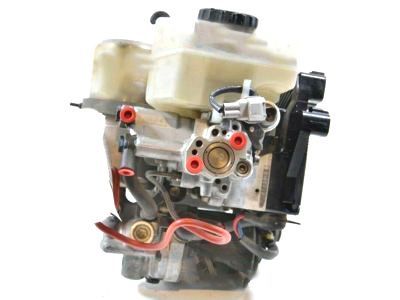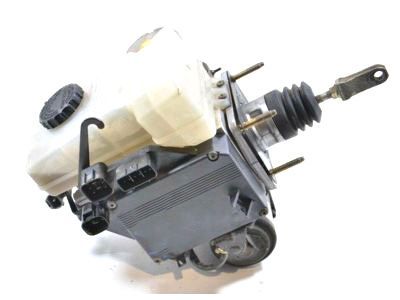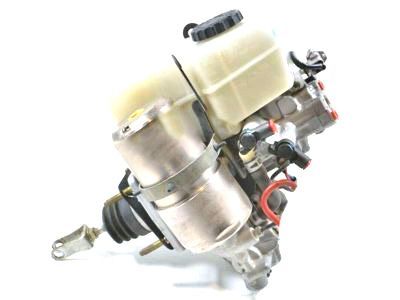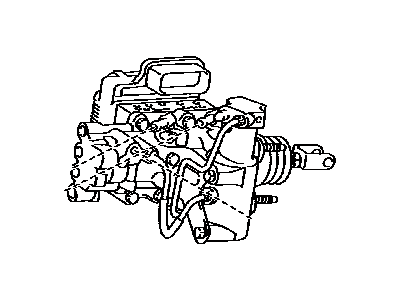×
- Live Chat
- 1-888-905-9199


My Garage
My Account
Cart
This part fits
2002 Toyota 4Runner
Check another vehicle- Production Date: from 08/2000
- Fitting Vehicle Options: VZN18#
Toyota 47050-35010 Brake Booster Assy, W/Master Cylinder
2000-2002 Toyota 4Runner 4705035010
Customer Questions & Expert Answers (2)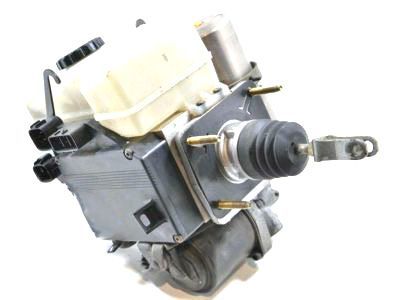
- Part DescriptionBrake Booster Assy, W/Master Cylinder
- Part Name Code47210L
- ManufacturerToyota
- Manufacturer's NotesThis part is discontinued.
This part fits
2002 Toyota 4Runner
Check another vehicle- Production Date: from 08/2000
- Fitting Vehicle Options: VZN18#
$1362.97 MSRP: $2006.29
You Save: $643.32 (33%)
Currently UnavailableDue to manufacturer supply shortage, this item isn't currently available for ordering.
- Related Parts
- Product Specifications
- Customer Questions & Expert Answers
Product Specifications
Brand Genuine Toyota Part Name Code 47210L Manufacturer Part Number 47050-35010 Part Description Brake Booster Assy, W/Master Cylinder Other Names Actuator Assembly Item Dimensions 17.4 x 14.6 x 12.8 inches Item Weight 29.80 Pounds Condition New Fitment Type Direct Replacement Manufacturer Toyota SKU 47050-35010 Warranty This genuine Toyota part is guaranteed by Toyota's factory warranty. Shipping & Return Shipping Policy Return Policy Warning: California's Proposition 65Customer Questions & Expert Answers
- Q:Is the above part number correct or is there another correct number for my car? Posted by ToyotaPartsDeal Specialist
- A:You can Select Your Vehicle to check if 47050-35010 fits your vehicle.Posted by ToyotaPartsDeal Specialist
- Q:How to overhaul the master cylinder on Toyota 4Runner? Posted by Customer
- A:Before deciding to overhaul the Brake Brake Master Cylinder, it is important to check the availability and cost of a new or factory rebuilt unit, as well as the availability of a rebuild kit. When removing the Brake Master Cylinder, it is necessary to place rags under the brake line fittings and cover the ends of the lines with caps or plastic bags to prevent fluid from spilling and damaging painted surfaces. The brake fluid level warning switch electrical connector should be unplugged, and the tube nuts at the ends of the brake lines should be loosened using a flare-nut wrench. The brake lines should be pulled away from the Brake Master Cylinder slightly and plugged to prevent contamination. The Brake Master Cylinder can then be removed by removing the mounting nuts, taking care not to kink the hydraulic lines. The reservoir cap should be removed and any remaining fluid discarded. When the Brake Master Cylinder is removed, the entire hydraulic system must be bled, which can be done more efficiently if the Brake Master Cylinder is filled with fluid and bench bled before installation. The Brake Master Cylinder should be mounted in a vise with soft jaws, and the reservoirs should be filled with brake fluid. The piston should be depressed several times to expel any air, and plugs should be temporarily installed in the holes when the bleeding procedure is complete. Finally, the Brake Master Cylinder can be carefully installed by reversing the removal steps, and the brake system should be bled.Posted by ToyotaPartsDeal Specialist
If you have any questions about this product, please don't hesitate to ask us. We will be happy to help you!- Q:
Why choose Toyota Parts Deal
- Dedicated Service
Your complete satisfaction is our #1 goal
- Lowest Prices
Best deals on genuine OE parts from dealerships
- Fast Delivery
Orders are processed and delivered promptly
